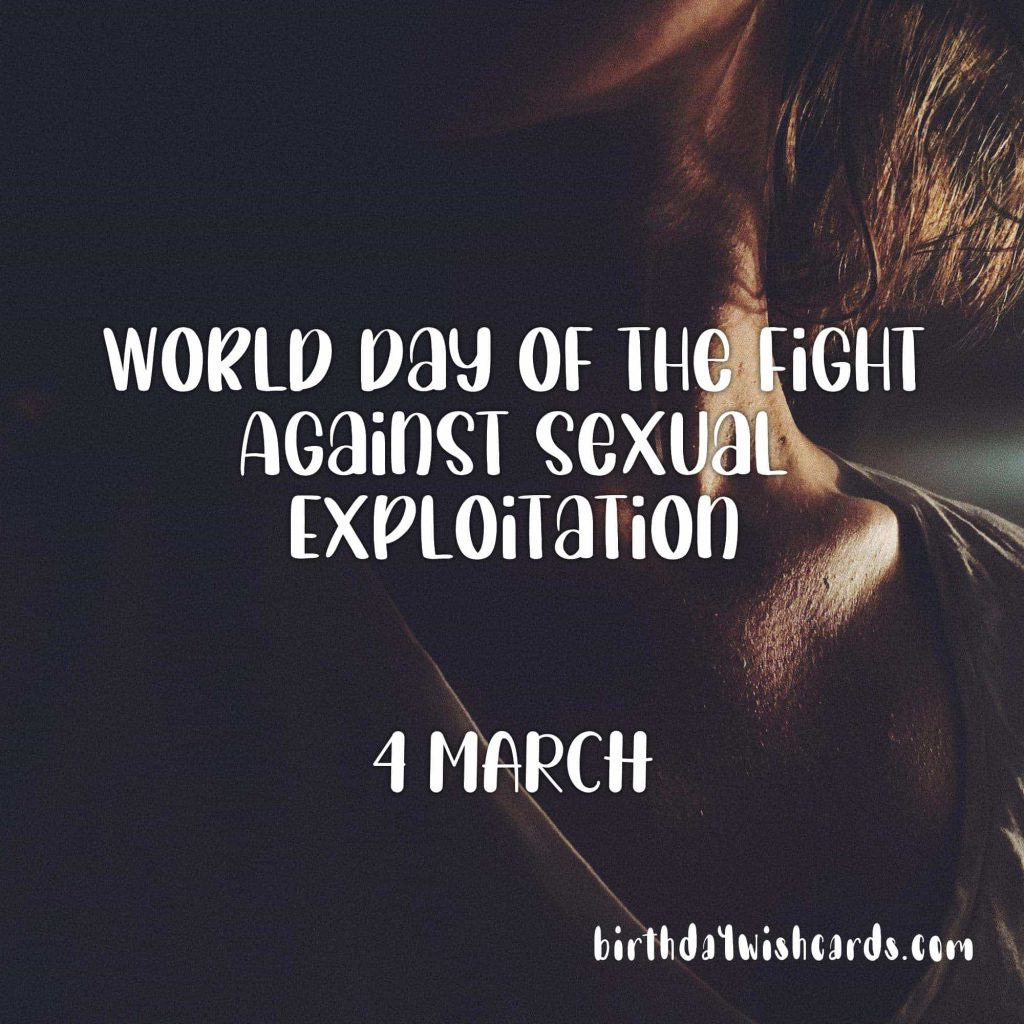
4 March: World Day of the Fight Against Sexual Exploitation
Origins of the Day
Since 2009, March 4th has been recognized globally as the World Day of the Fight Against Sexual Exploitation. This day is dedicated to raising awareness and mobilizing action to end sexual exploitation—a grave violation of human rights affecting millions worldwide.
Sexual exploitation disproportionately targets women and children, making it a pervasive international crisis. It is estimated that, on average, eight women, girls, and often young boys fall victim to global criminal networks every second. These networks exist solely to sexually exploit, traffic, and enslave vulnerable individuals.
This horrific system strips victims of their fundamental rights—including freedom, dignity, autonomy, and the ability to live where and how they choose.
Trafficking and Sexual Exploitation
While sexual exploitation occurs worldwide, certain regions are particularly vulnerable due to socioeconomic and geopolitical factors. Areas such as Southeast Asia, Eastern Europe, and parts of Latin America and the Caribbean are especially at risk. Women trafficked from these regions are often transported to developed countries, where they are forced into prostitution.
In many cases, exploited individuals remain close to their places of origin, especially young girls and boys. According to UNICEF, over 3 million children worldwide are affected by prostitution, with children making up more than one-third of those involved in the sex trade in Asia.
Exploitation often begins with families who, due to lack of information and resources, are approached by traffickers promising a better future for their children. These children are then entrusted to criminals under false pretenses.
Once separated from their families and communities, children lose their identities and become easy prey for criminal syndicates that coerce them into sex work.
The International Labour Organization (ILO) estimates that nearly one million people are trafficked annually for sexual exploitation. While 98% of victims are women and girls, a significant number of boys and young men are also affected.
Major International Crimes
Globally, drug and weapons trafficking are among the most notorious crimes. However, human trafficking for sexual exploitation ranks as one of the most lucrative illegal enterprises. According to the ILO, this form of trafficking generates between US $7 billion and $12 billion annually from the initial “sale” of victims. When these individuals are exploited in destination countries such as the United States, the illegal business can generate an additional US $32 billion each year.
Despite the enormous profits made by traffickers, victims receive no financial benefit, rendering human trafficking a modern form of slavery.
Forms of Sexual Exploitation
Sexual exploitation encompasses a range of abuses beyond prostitution. One significant aspect is sexual tourism. In some countries, particularly in Southeast Asia, historically lax legal restrictions have enabled the growth of an industry where tourists—primarily men—travel to engage in sexual activities with underage boys and girls.
Global Awareness and Action
Ending sexual exploitation requires international cooperation, robust legal frameworks, and community-based interventions. Governments, NGOs, and international organizations are working together to strengthen laws, support victims, and educate vulnerable populations.
Key efforts include:
- Enforcing strict anti-trafficking laws and imposing severe penalties on perpetrators
- Providing rehabilitation and reintegration services for survivors
- Raising public awareness about the signs and dangers of sexual exploitation
- Supporting economic development programs to reduce vulnerability
- Collaborating globally to dismantle trafficking networks
How You Can Help
Individuals can play a vital role in combating sexual exploitation by staying informed, supporting reputable organizations, and advocating for stronger policies. Reporting suspected trafficking to authorities and educating others about the issue are also crucial steps in addressing this crisis.
To learn more about human trafficking and how you can get involved, visit the United Nations Office on Drugs and Crime (UNODC) website for comprehensive resources and guidance.
Conclusion
The World Day of the Fight Against Sexual Exploitation on March 4th serves as a vital reminder of the urgent need to end this pervasive abuse. Through awareness, education, and coordinated global action, we can protect the rights and dignity of millions of victims and work towards eradicating sexual exploitation worldwide.




